
| Lawn Armyworm (one synonym: Spodoptera acronyctoides Guenée, 1852) ACRONICTINAE, NOCTUIDAE, NOCTUOIDEA | (donherbisonevans@yahoo.com) and Stella Crossley |
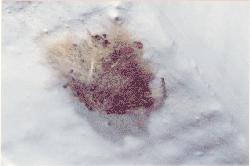
(Photo: Don Herbison-Evans, Bundaberg, Queensland)

| Lawn Armyworm (one synonym: Spodoptera acronyctoides Guenée, 1852) ACRONICTINAE, NOCTUIDAE, NOCTUOIDEA | (donherbisonevans@yahoo.com) and Stella Crossley |

(Photo: Don Herbison-Evans, Bundaberg, Queensland)
These eggs were laid on the painted wall of a house, as a hairy irregular mass about 0.5 cms. across. The baby Caterpillars were white with big black heads, about 0.1 cm long. They descended from the wall on silken threads.
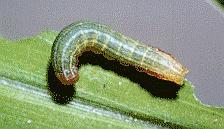
The young caterpillars are smooth-skinned and green with longitudinal lines.
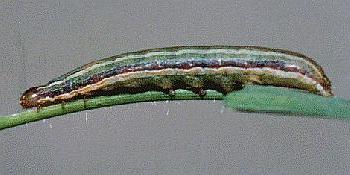
Later, the caterpillars become brown with two rows of black triangles down the back. When disturbed, they drop, and curl into a spiral with the head in the middle.
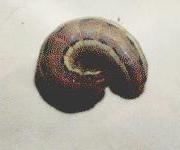
They are an international agricultural pest on crops and pastures, feeding on plants from the family POACEAE such as:
as well as:
The caterpillars grow to a length of about 3 cms. They burrow into the soil below the plant where they pupate without a cocoon.
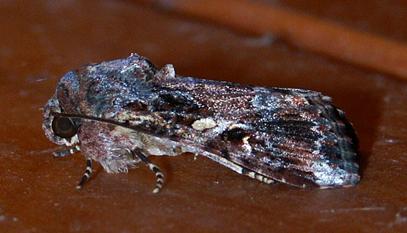
The adult moth is brown with a complex pattern of light marks on the forewings. The hindwings are plain pearly white. It has a wingspan of about 4 cms. The pheromones of this species have been identified.
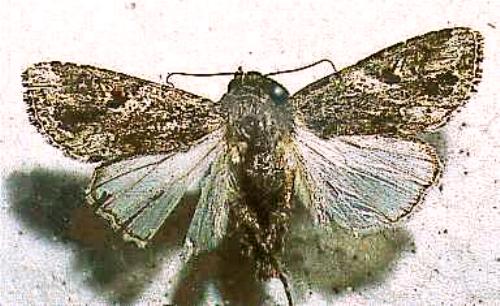
The moth is reportedly preyed on by a Bolas Spider. Bolas spiders swing a silk thread with a sticky knob on the end, and some emit a copy of the female moth's pheromone to attract the male moths.
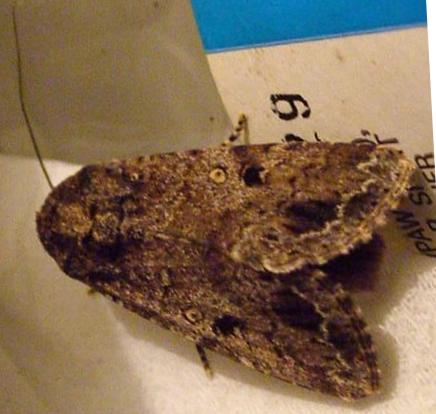
Attempts to control the pest include the use of:
The species occurs across Asia and the Pacific, including:
as well as much of Australia, including :
In Sydney, counts were made of the number of adults coming to a nightly ultra-violet light, and the numbers totalled for each month of the year :
| Jan | Feb | Mar | Apr | May | Jun | Jul | Aug | Sep | Oct | Nov | Dec |
|
|
|
|
|
|
|
|
|
|
|
|
|
Further reading :
Jean-Baptiste Alphonse Dechauffour de Boisduval,
Nouvelles Annales du Muséum d'Histoire Naturelle,
Paris, Volume 2, Part 2 (1833), p. 240, No. 3.
Ian F.B. Common,
Moths of Australia,
Melbourne University Press, 1990, fig. 49.1, pp. 61, 65, 462.
Peter Marriott & Marilyn Hewish,
Moths of Victoria - Part 9,
Cutworms and Allies - NOCTUOIDEA (C),
Entomological Society of Victoria, 2020, pp. 12-13.
Buck Richardson,
Tropical Queensland Wildlife from Dusk to Dawn Science and Art,
LeapFrogOz, Kuranda, 2015, p. 121.
 caterpillar |  butterflies |  Lepidoptera |  moths |  caterpillar |
(updated 27 April 2013, 14 December 2020, 19 May 2021, 10 April 2022)